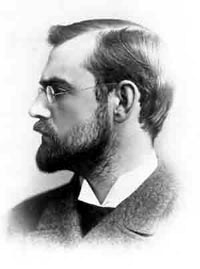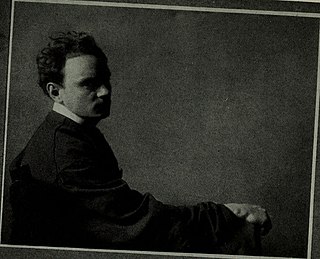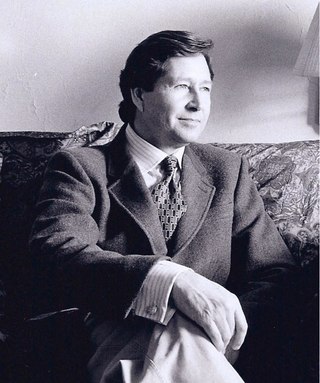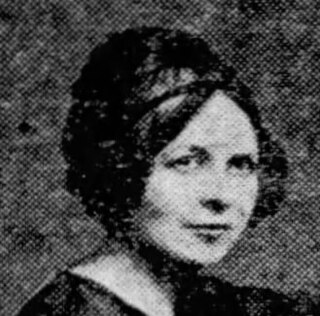
Paul Howard Manship was an American sculptor. He consistently created mythological pieces in a classical style, and was a major force in the Art Deco movement. He is well known for his large public commissions, including the iconic Prometheus in Rockefeller Center and the Celestial Sphere Woodrow Wilson Memorial in Geneva, Switzerland. He is also credited for designing the modern rendition of New York City's official seal.

Brookgreen Gardens is a sculpture garden and wildlife preserve, located just south of Murrells Inlet, in the U.S. state of South Carolina. The 9,100-acre (37 km2) property includes several themed gardens featuring American figurative sculptures, the Lowcountry Zoo, and trails through several ecosystems in nature reserves on the property. It was founded by Archer Milton Huntington, stepson of railroad magnate Collis Potter Huntington, and Anna Hyatt Huntington, his wife, to feature sculptures by Anna and her sister Harriet Randolph Hyatt Mayor, along with other American sculptors. Brookgreen Gardens was opened in 1932. It was developed on property of four former rice plantations, taking its name from the former Brookgreen Plantation, which dates to the antebellum period.

A sculpture garden or sculpture park is an outdoor garden or park which includes the presentation of sculpture, usually several permanently sited works in durable materials in landscaped surroundings.

Huntington Beach State Park is a 2500 acre coastal preserve and state park near Murrells Inlet, in Georgetown County, South Carolina. It has a large sandy beach, few beach-goers, and numerous wild birds to watch over the seasons.

Archer Milton Huntington was an American philanthropist and scholar, primarily known for his contributions to the field of Hispanic studies. He founded the Hispanic Society of America in New York City, and made numerous contributions to the American Geographical Society.

Anna Vaughn Huntington was an American sculptor who was among New York City's most prominent sculptors in the early 20th century. At a time when very few women were successful artists, she had a thriving career. Hyatt Huntington exhibited often, traveled widely, received critical acclaim at home and abroad, and won multiple awards and commissions.

Atalaya Castle, often known simply as Atalaya, was the winter home of industrialist and philanthropist Archer M. Huntington and his wife, the sculptor Anna Hyatt Huntington, located in Huntington Beach State Park near the Atlantic coast in Murrells Inlet, Georgetown County, South Carolina.

Atalaya and Brookgreen Gardens is a National Historic Landmark District encompassing two formerly-united properties associated with sculptor Anna Hyatt Huntington (1876-1973) on the coast of Georgetown County, South Carolina. The district includes Atalaya Castle, now part of Huntington Beach State Park, and the sculpture garden of Brookgreen Gardens, both properties part of a large estate developed by Anna and Archer M. Huntington in the 1930s. It includes the nation's first formal sculpture garden, and one of the studios at which Huntington did her most productive work. The district was designated a National Historic Landmark in 1992.

Frog Baby Fountain is a statue set in the middle of a fountain on the Ball State University campus. It is known as a sign of good luck and is a popular meeting place. The Frog Baby statue was cast by Edith Barretto Stevens Parsons in 1937 and has been moved several times prior to becoming what it is known as today. Frank C. Ball donated the statue to the university and it remained in the Ball State University Museum of Art until it became damaged by excessive rubbing by students, and was then packed away. In 1993, Frog Baby was restored and placed in a fountain where it resides today. The fountain is dedicated to Alexander Bracken, the son-in-law of Frank C. Ball, who was responsible for Ball State's rapid growth after World War II.

Huntington is the surname of three prominent families from the United States of America. The first was active in the eastern region; the second played an important role in the early Latter Day Saint movement, and pioneered and founded the State of Utah with Brigham Young; the third was active on both coasts and the regions linking them. All three lines descend from Simon Huntington and his wife, Margaret Baret Huntington, who immigrated to America from Norwich, England, in 1633.

Leo Lentelli was an Italian sculptor who immigrated to the United States. During his 52 years in the United States he created works throughout the country, notably in New York and San Francisco. He also taught sculpture.

Brenda Putnam was an American sculptor, teacher and author.

Edith Woodman Burroughs was an American sculptor. Her work was included in the 1913 Armory Show.

Lee Harold Letts, American artist, sculptor, painter and goldsmith, is primarily known for his bronze sculptures of birds and animals. His practice is based on the principles of traditional studio craftsmanship, as well as the importance of studying under a master in the manner of the American artists who studied at the École des Beaux-Arts in Paris. The beauty of nature is the primary theme of his artwork. He holds a unique position as a bronze sculptor trained as a goldsmith.

Cleo Hartwig was an American sculptor who worked in stone, wood, terra cotta, plaster, paper, woodcut, and ceramic. She won a number of awards, including national awards, and her work is exhibited across the northeast U.S. She is regarded as a member of The New York School.

Beatrice Fenton was an American sculptor and educator born in Philadelphia, Pennsylvania. She is best known for her whimsical fountains. Her work was also part of the sculpture event in the art competition at the 1932 Summer Olympics.

Eugenie Frederica Shonnard (1886–1978) was an American sculptor and painter born in Yonkers, New York.

Allie Victoria Tennant was an American sculptor born in St. Louis, Missouri, the daughter of Thomas Richard and Allie Virginia Brown Tennant. She worked primarily out of Dallas, Texas, where her most famous work Tejas Warrior was produced for the Hall of State at the Texas Centennial Exposition.

Cleora "Clio" Hinton Bracken was an American sculptor.

Beatrice Irene Gilman Proske was an art historian, specifically in Spanish and American sculpture. She was an early employee of the Hispanic Society of America in New York City, with a specialty in sculpture. Her expertise expanded to American sculpture with her work at Brookgreen Gardens in South Carolina, and she died an honorary trustee. Her work also included advising the magazine of the National Sculpture Society. She was the author of preeminent studies on Spanish sculpture and American sculpture.




















